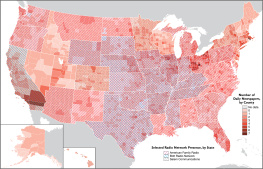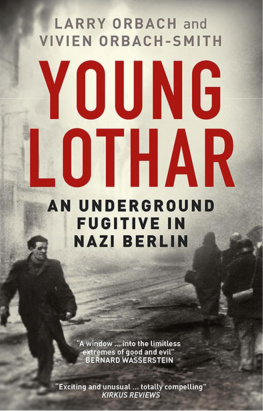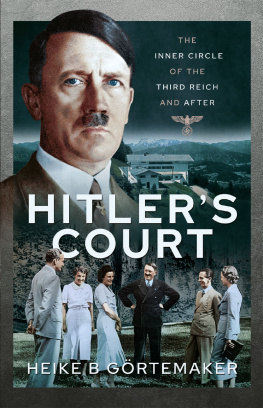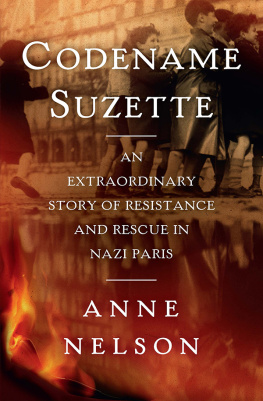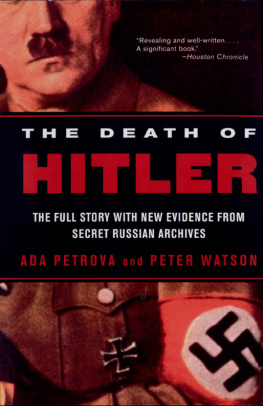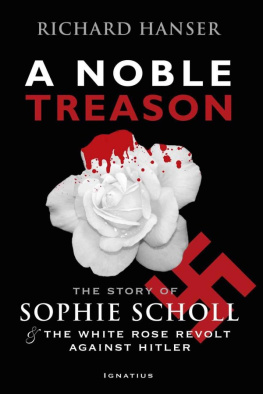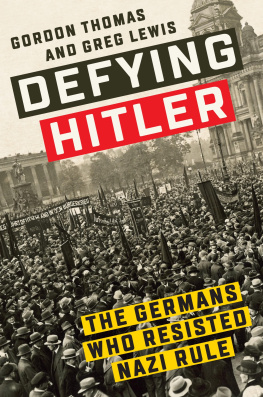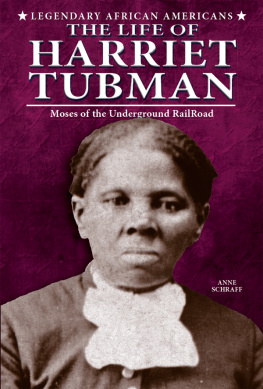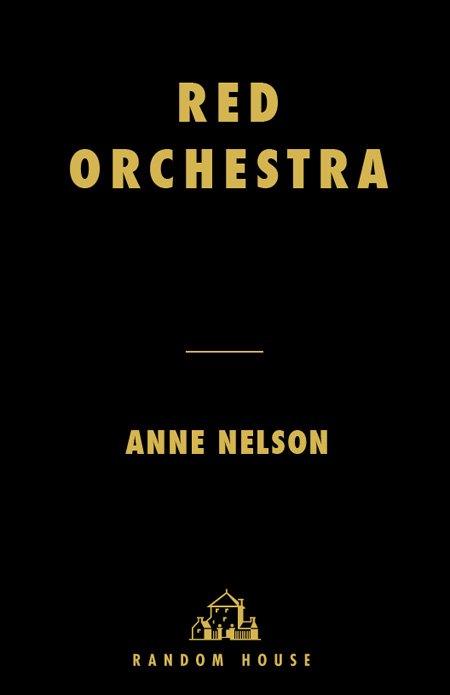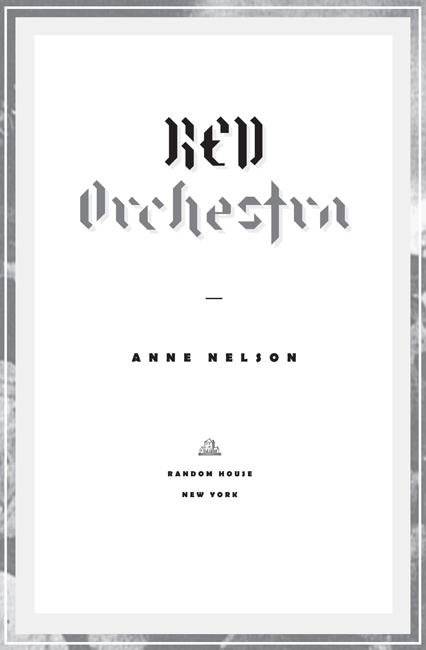THE COUPLES
THE KUCKHOFFS
Greta Lorke: Sociologist. She met Arvid and Mildred Harnack as a student in Wisconsin in the 1920s. She met Adam Kuckhoff in Germany in 1930 and married him in 1937.
Adam Kuckhoff: Playwright, novelist, journalist, screenwriter. A contemporary of Bertolt Brecht's in Weimar theater.
THE HARNACKS
Arvid Harnack: Economist. He came from a distinguished family of German scholars, and was a Rockefeller Fellow, University of Wisconsin, where he met and married American Mildred Fish in 1926. A number of his cousinsincluding Dietrich and Klaus Bonhoeffer and Ernst von Harnackwere involved in the July 20, 1944, coup attempt.
Mildred Fish: Scholar and professor of American literature from Wisconsin. She also worked as a professional translator and English tutor in Germany.
Falk Harnack: Arvid Harnack's younger brother and supporter. Also an early member of the White Rose student group in Munich.
THE SIEGS
John Sieg: Journalist, factory worker, and railroad employee. Born in Detroit and grew up in the United States and Germany. Resettled in Germany in 1928 and married Sophie Wloszczynski. Joined German Communist Party in 1929.
Sophie Wloszczynski: Secretary and typist. Her family members were ethnic Poles who suffered under German occupation.
THE SCHULZE-BOYSENS
Harro Schulze-Boysen: The scion of a prominent military family. Student journalist before the Nazi takeover, later joined the Luftwaffe, where he worked in the air force intelligence division. Married Libertas Haas-Heye in 1936.
Libertas Haas-Heye: Film publicist and producer. Granddaughter of a Prussian prince, family friend of Hermann Gring.
THE HUSEMANNS
Walter Husemann: Journalist. Was sent to Sachsenhausen and Buchenwald in the 1930s as a Communist political prisoner; released. Married Marta Wolter in 1938.
Marta Wolter: Actress. Before the Nazi takeover, she appeared in the Brecht/Weisenborn stage premiere of The Mother and in the Brecht film Kuhle Wampe. Sent to the Moringen concentration camp in 1937 for hiding a political fugitive; released. Friend of Gnther Weisenborn; knew John Sieg through Communist Party circles.
THE SCHUMACHERS
Kurt Schumacher: Prize-winning sculptor. Also created decorative work for architectural design. His working-class parents joined the Communist Party in the 1920s. Married Elisabeth Hohenemser in 1934. Drafted into the German army in 1941.
Elisabeth Hohenemser: Graphic artist and photographer. A half-Jew, who was supported as a young student by Jewish relatives in Frankfurt.
THE ENGELSINGS
Herbert Engelsing: Lawyer and UFA movie producer. Introduced the Kuckhoffs and the Schulze-Boysens. A shadow partner in the Rote Kapelle resistance activities. His law partner, Carl Langbehn, was involved in the July 20, 1944, coup attempt.
Ingeborg Engelsing: A half-Jew, from a family of prominent lawyers and academics. She and Engelsing used their connections in the movie industry to get Hitler's permission to marry.
HIMPEL/TERWIEL
Helmut Himpel: Dentist. Had many patients in the film industry, thanks to friendship with producer Herbert Engelsing. Long engaged to Marie Terwiel, but was forbidden to marry her under the Nuremberg race laws of 1935, as she was a half-Jew.
Marie Terwiel: Law student and musician. Half-Jew, practicing Catholic.
THE COPPIS
Hans Coppi: Young Communist blue-collar worker. Was repeatedly arrested by the Nazis for protest activity, and sent to Oranienburg concentration camp. Heard Harro Schulze-Boysen speak at a meeting, and later agreed to help with the radio operation. Married Hilde Rake in 1941.
Hilde Coppi: Young activist, involved with Communist youth anti-Nazi underground.
OTHER INDIVIDUALS
Adolf Grimme: Social Democrat official and former Prussian Minister of Culture. Close friend of Adam Kuckhoff since college. After the Nazi takeover, became active in Dietrich Bonhoeffer's branch of the dissenting Lutheran Church.
John Graudenz: Journalist, photographer, and businessman. One-time United Press and New York Times reporter in Berlin.
Gnther Weisenborn: Playwright and journalist. Brecht collaborator in the 1920s, friend of Harro Schulze-Boysen and Marta Wolter.
Helmut Roloff: Classical pianist. Conservative, friend of Helmut Himpel and Maria Terwiel. Motivated by his anger at the treatment of Jewish friends and neighbors.
Cato Bontjes van Beek: Young ceramicist. Created links between Harro Schulze-Boysen and student circles.
Katja Casella and Lisa Egler-Gervai: Young Jewish art students, and friends of Cato Bontjes van Beek.
THE AMERICANS
Ambassador William Dodd: U.S. ambassador to Germany (19331937). Early critic of the Nazis. His work was complicated by his unruly daughter, Martha.
Donald Heath: U.S. embassy official in Berlin (19371941). Close friend of Arvid and Mildred Harnack; conveyed Arvid's economic intelligence to the State Department.
THE SOVIET INTELLIGENCE AGENTS
Leopold Trepper: Polish Jewish Communist, recruited as a Soviet intelligence agent in the 1930s. After escaping Stalin's purges, he set up a Soviet intelligence post in Brussels, Belgium. He coordinated some Soviet intelligence operations in Western Europe, but he never met or had any direct contact with the group in Berlin.
Anatoli Gourevitch (code name Kent): Soviet agent assigned to Trepper's operation in Brussels. Dispatched to Berlin in late 1941 to restore contact and correct radio problems.
Alexander Korotkov (also called Alexander Erdberg): Soviet agent. Sought out Arvid Harnack in 1940, set up communications to Moscow, and left Germany after the 1941 invasion.
T HIS BOOK BEGAN BECAUSE THE REICHSTAG WASN'T FINISHED. It was April 1999, and a colleague and I, in Germany on business, had jumped on a train to spend the weekend in Berlin. He was set on seeing Norman Foster's gorgeous new dome for the Reichstag, the home of the German Parliament. This symbol of German democracy had been gutted by fire in the days of the Nazi takeover, and pulverized by the Soviet assault twelve years later. Now it was being reinaugurated as a delayed consequence of reunification. But we were disappointed. The guard at the door told us that the building wouldn't open for visitors until the next day, and we had to depart that evening.


